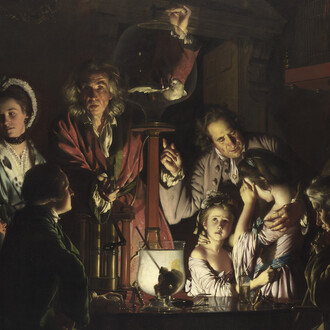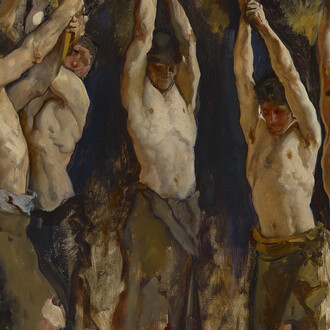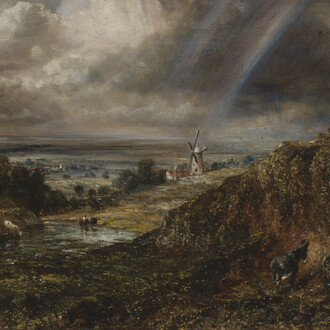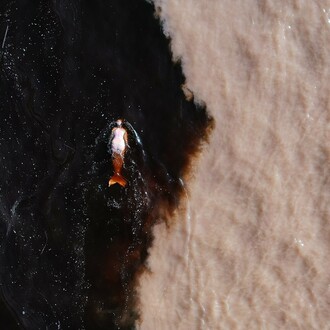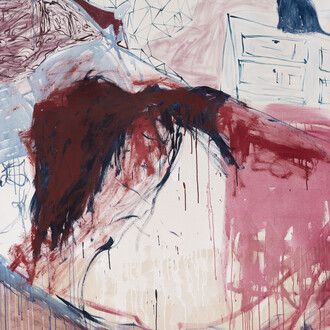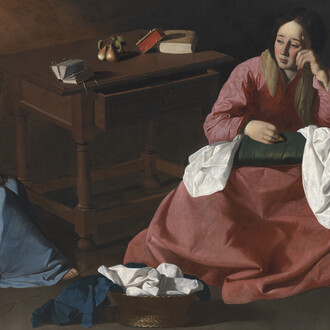Vitrine Bermondsey Square’s latest exhibition showcases the work of Lebanese artist Raed Yassin in a site-specific solo presentation curated by Amanda Abi Khalil. WSI caught up with the artist and curator to provide a deeper understanding of their collaboration.
Raed - Your eight photographs from ‘Postponed Noon’ were taken between 2010 and 2011 and your sound piece was recorded this year. How did this combination arise?
For me to install an artwork in any space, the artwork remains a living body and develops by time and within space (develops and breathes depending on its surroundings). I have always been reconsidering my art pieces each time I install them, according to the context they are shown in. For this show, I found that there is something missing, and I wanted to play with the concept of flipping indoors and outdoors and vice versa. I was always interested in the public / private issue. In this installation I wanted to put my intimacy in an open public space. That’s how I came to make a sound piece that accompanied the eight photographs at Vitrine.
Amanda - What motivated you in proposing these works for Vitrine Bermondsey Square?
Vitrine Bermondsey Square presents a unique typology as it is on public view, in a closed window, and located on an officially private space at the same time. My research and interest in tackling subjects related to the definition of public space began during my studies in curating art projects for public spaces at the Sorbonne in Paris. I have cultivated this interest in different work fields, whether opera festivals, cultural institutions, running an art space or curating art projects.
For Vitrine, I was looking for a project that would in the first place challenge the notion of ‘’site-specificity’’ in the context of art production, and, secondly, an idea where the glass of the vitrine would add or remove an additional layer to the perception of the work. I was at first convinced that it had to be a ‘’commissioned’’ piece, a work thought specifically for this space, until I looked at Raed Yassin’s photo series ‘’Noon’’ and decided to redefine the context of their production by displaying the windows in the photographs inside another window.
How to make a site-specific installation from an already produced work? The vitrine was the answer. Together with the artist, we came up with this installation in two parts, thus altering the perception of the space in which the photographs are placed. The eight windows in the photographic series are confined to an interior space, although the images open to an exterior cityscape. Meanwhile, a 24-hour-long sound piece recorded in the artist’s apartment is played in Bermondsey Square, transforming it into an apartment. The sound piece was the commissioned part of the installation, together with ‘’the context of the exhibition’’, in this case the Vitrine ‘’Noon’’ became part of an immersive site-specific installation.
The project also contains the idea of a ‘’view on Beirut’’, the city that we see in the background, limpid at times and hidden at others, depending on the curtains. It links a public square in London to Beirut, with all the poetic, political, and philosophical connotations that this may imply.
Raed - the press release describes these works as “Taken from different bedroom windows in Beirut… [the photographs] conjure the atmosphere of a latent dream the artist finds himself in when he wakes up“. Is it important for you to endow your work with such intimacy?
It depends on each project. Each piece that I start with it has a context and a concept that has been built around the image, sound or 3-dimensional work. I have always been using very intimate and personal stories from my life in my artwork, even though my artwork has a lot of fictionalized elements in it. For this piece in particular, intimacy was a main component, and also my personal sphere / against society (city) in general. I wanted to have a very strong statement on intimacy to make a balance with what I face in society in daily life.
Amanda - the films in your screening ‘Another screening on Beirut’ take a similar approach in responding to the city. Can you tell us a bit about this selection?
‘’Another screening on Beirut’’ comes with a statement with this title. Many films deal with Beirut’s cityscape, especially in the aftermath of the civil war and the ongoing ‘’destruction’’ / ‘’reconstruction ‘’ of the city. There is always a need to represent this particular issue, even though a lot has been shown and said on it. I chose three films of artists based in Lebanon that resonated aesthetically, formally or conceptually with the installation on Bermondsey Square.
Siska’s super 8 film “EDL” starts with amazing window views of the city, taken from the building of the Electricité du Liban. It is a film about this modernist building shot from inside and outside. The building’s physical presence in Beirut’s cityscape as much as its symbolic presence in Lebanese daily life is emblematic and problematic. The film has a very strong soundtrack, echoing Beirut’s sounds, strident noise and sharp tunes. Laure de Selys’s “17 unsent postcards” follows this experimental aesthetic of moving images from intimate shots taken inside apartments to views of the city like thumbnails, that are enlarged following highly present sounds each time. It displays samples of images and sounds from the city. Cherri’s film ‘’Un cercle autour du soleil’’ was the last and only human ‘’voice’’ in the installation and the film screening. Alongside a beautiful and disturbing tracking shot of buildings scrolling down, Cherri’s voice tells the conflictual relationship between the body and the city in a permanent ruin.
Raed - in your music and much of your past work, you draw material from records, television and film; your recording in ‘Postponed Noon’ comes from a much closer and more private place. Do you feel these are two disparate sources or part of the same process?
Using records, tv and film for me is as intimate as recording sounds from my own apartment, because existing material has no absolute meaning. It has always had a meaning for those who use it and who consume it. Any image or sound has its own history and narrative; so do field recordings. Every image and sound is highly manipulated; so are field recordings. It doesn’t matter how true the story is, it matters if you believe it or you don’t.
Raed - you have exhibited widely on an international platform. How has this affected and influenced your practise?
Every input, every place, every society, every city, every experience, every rumour, every drink, and every friend has given an added quality to my practice.
What has inspired you during your stay in London?
Raed: Speaking about intimacy, the most inspiring thing that happened to me during my stay was staying at my friend’s place – Souheil Sleiman – and listening to an old Lebanese band on his record player.
Amanda: Both the artist and myself have already visited London. I think we really made the most of our free time to visit exhibitions and art institutions. For me, the highlights of this trip were definitely the exhibition ‘’ Dancing around the bride, Cage, Cunningham, Johns, Rauschenberg, and Duchamp’’ at the Barbican, Saloua Raouda Choucair’s retrospective at the Tate Modern and Maria Marshall’s video work ‘Playground’ at Café Gallery, as part of the exhibition Mass. En Masse. Mass Medium. curated by Alys Williams.
You have several projects on the go for the second half of 2013. Where can we see your work next?
Raed: Several places. This month at the Singapore Art Museum “Terms and Conditions” exhibition. I’m preparing a solo exhibition in Beirut in September. Also in September at the Thessaloniki Biennial in Greece. Villa Boghossian in Brussels also in September. A solo at Kalfayan Galleries in Greece between September and January. Some performances here and there.
Amanda: I have an exhibition opening on June 18th at the French Institute in Beirut with Belgian artist Laure de Selys ‘’Egchi Memeg, sour tits and other displacements’’. I am also working on an exhibition in Dubai with Lebanese artists Stéphanie Saadé and Charbel-Joseph H. Boutros, opening on September 9th at Greynoise Gallery. The project was born of my latest exhibition in Beirut, “We hesitated between arrangements, modulations and manoeuvres”.













